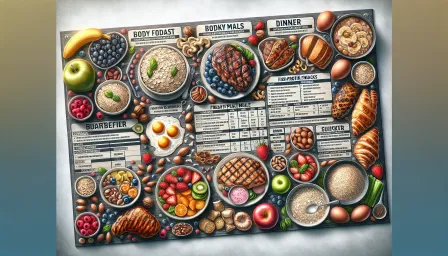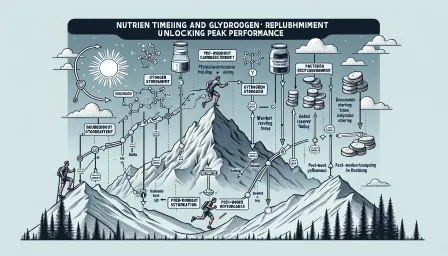The Ultimate Guide to Food Journaling for Weight Loss

Discover the ultimate guide to food journaling for weight loss, with step-by-step instructions, benefits, and tips to maximize your weight loss journey.
Food journaling is a powerful tool for weight loss that has been endorsed by nutritionists and weight loss experts alike. This ultimate guide will take you through the process of food journaling, explain its benefits, and provide you with practical tips for successful weight management.
What is Food Journaling?
Food journaling involves keeping a detailed record of everything you eat and drink throughout the day. This can be a physical notebook, a digital app, or even a spreadsheet. The key is to be consistent and honest in your tracking.
Benefits of Food Journaling for Weight Loss
1. Increased Awareness
Keeping a food journal helps you become more aware of your eating habits. It allows you to identify patterns and triggers that lead to unhealthy eating, making it easier to make mindful choices.
2. Accountability
Writing down everything you consume holds you accountable to your weight loss goals. It creates a sense of responsibility and can deter you from making poor food choices.
3. Identifying Problem Areas
Food journaling allows you to pinpoint areas where you may be consuming excessive calories, sugar, or unhealthy fats. This enables you to make targeted changes to your diet.
4. Tracking Progress
By logging your food intake, you can track your progress over time. This can be highly motivating, especially when you see improvements in your eating habits and weight loss results.
How to Start Food Journaling for Weight Loss
1. Choose Your Medium
Decide whether you prefer a physical notebook or a digital option. There are numerous apps available that can simplify the process, such as MyFitnessPal, Lose It!, or Yazio.
2. Be Consistent
Record everything you eat and drink as soon as possible. Consistency is key to gaining accurate insights into your eating habits.
3. Include Details
Include the type of food, portion size, time of consumption, and any accompanying emotions or activities. The more detail you provide, the better.
4. Review Regularly
Set aside time each week to review your journal. Look for patterns, identify areas for improvement, and celebrate your successes.
Tips for Effective Food Journaling
1. Be Honest
Accurate tracking is essential. Don’t omit items because you think they are insignificant; every bite counts.
2. Plan Ahead
Planning your meals and snacks in advance can help you stay on track. Use your journal to set daily or weekly goals.
3. Stay Positive
Focus on the positive changes you’re making instead of being negative about setbacks. A positive mindset can improve your chances of long-term success.
4. Seek Professional Help
If you’re struggling, consider consulting a nutritionist or weight loss coach. They can provide personalized advice and support to enhance your food journaling efforts.
Overcoming Common Challenges
1. Time Constraints
Finding time to journal can be challenging, especially with a busy schedule. Consider using a mobile app to make tracking more convenient.
2. Forgetting to Record
Set reminders to log your meals and snacks. Some apps can send push notifications to help you stay on track.
3. Emotional Eating
Emotional eating can be a significant hurdle. Use your food journal to note your feelings and identify triggers. This can help you develop healthier coping mechanisms.
Conclusion
Food journaling for weight loss is a highly effective strategy that can lead to significant improvements in eating habits and weight management. By increasing awareness, providing accountability, and allowing you to track your progress, food journaling can be a vital tool on your weight loss journey. Follow the steps and tips outlined in this guide to maximize your success and achieve your weight loss goals.



























